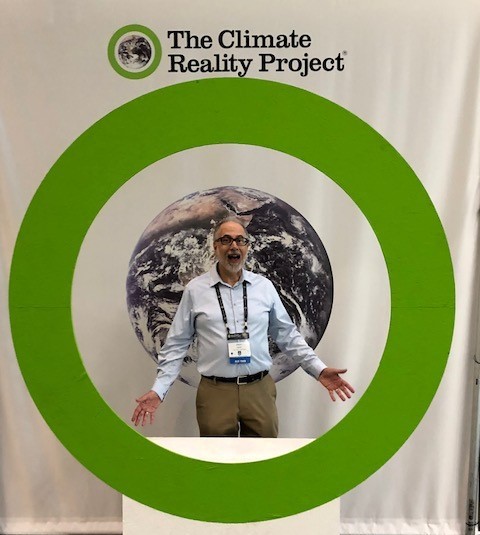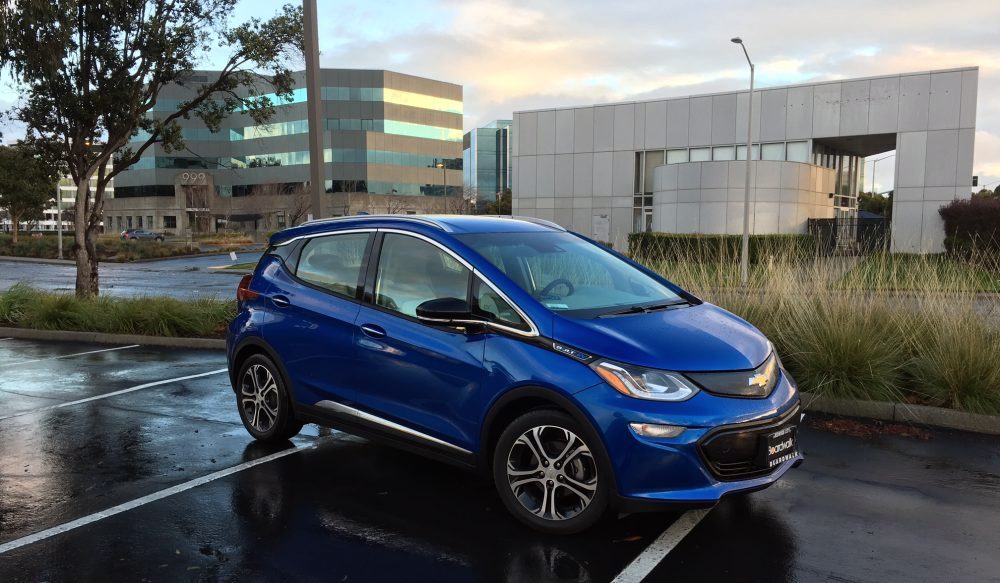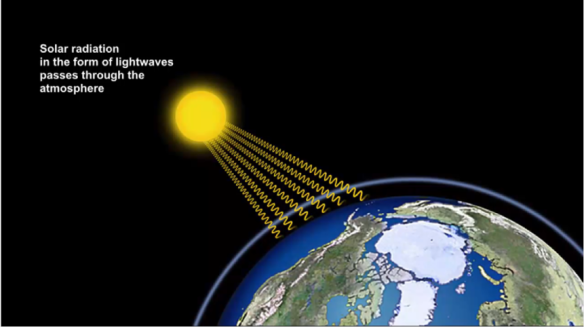Training for Change
Climate Reality Leadership Corps Training
Last week I became a Climate Reality Leader when I completed three days of training in Los Angeles. Now, I am committed to doing everything I can to fight global warming and the climate change it brings, as a writer, environmental activist and a grandparent.
Here is the mission of The Climate Reality Project:
“Our mission is to catalyze a global solution to the climate crisis by making urgent action a necessity across every level of society.”

The Climate Reality event I attended was the 39th training led by former Vice President Al Gore, who has spent 40 years studying, writing about, and advocating for this topic. This training was by far the largest, with 2,200 people in the energy-efficient Los Angeles Convention Center. The first one, in 2006 in Mr. Gore’s barn in Tennessee, trained 50.
Over the three days, we covered many areas. We heard from distinguished scientific experts, Los Angeles Mayor Eric Garcetti, community justice advocates, policy makers and experts in how to present this crucial message. Amanda Gorman, the 20-year-old Youth Poet Laureate of the United States, read her poem. One young woman described her difficult life living next door to an oil well.
Numerous panels discussed the various aspects of the crisis and the many solutions that are already in process. I met and spoke with dozens of people. Throughout the three days, Vice President Gore was present, usually on stage, guiding the program.
Vice President Gore gave a special two-hour version of his famous climate presentation early on, and near the end, showed us his compact 14-minute one. That’s the one we will start with ourselves. The message, regardless of length, is compelling, and I will share the essence of it below.
I originally created stevegoesgreen.com to tell about my personal experience of electric vehicles. Now, it will expand to talk about a wider range of environmental and sustainability issues, but will focus on:
- Replacing gasoline vehicles with EVs
- Moving from carbon-based energy generation (coal, natural gas) to clean power (solar, wind, hydroelectric, etc.)

I started by upgrading my personal transportation
We can create a new, better way of life, while keeping our economy strong. In 2016, solar energy employed more than 373,000 Americans and wind energy more than 101,000. Only the coal and oil companies will be unhappy about the move to renewable resources.
Here’s the Problem
The basic science behind global warming is simple, but the processes are very complex and interconnected.
We may look up and think the atmosphere goes a long way out into space, but it’s actually a thin shell. And we are dumping 110 million tons of manmade global warming pollution into it every day.
Energy comes from the sun to the earth as light, which warms it. Much of the energy bounces back into space, but some remains. This is the well-known greenhouse effect, which you can experience for yourself if you sit in a car with the windows up on a summer day.
Our atmosphere has done a great job of keeping conditions right for us, but the added pollution, particularly carbon dioxide (CO2), has thickened it, so now, more heat remains, warming the planet.

There are many sources of global warming pollution, but the largest is from burning fossil fuels for power generation and in vehicles. There’s been a huge spike in emissions since World War II, and that has caused the surface temperature of the earth to gradually rise. Sixteen of the hottest 17 years ever recorded have occurred since 2001.
The oceans are warming, too. Warmer air holds more water vapor, leading to stronger storms. When the land can’t absorb the additional rainfall fast enough, it leads to floods. Extreme rain storms have become more common since the 1950s. And the disruption of the established patterns and flows on the earth leaves some areas with more rain and some with much less.
An additional problem is that as the ocean absorbs the extra CO2, it becomes more acidic, creating problems for shellfish and bleaching coral reefs. It can affect the flow of ocean currents and the lives of fish, too.
The added trapped heat dries out the land, leading to higher fire danger. The fire season in the Western U.S. is 100 days longer than it was in the 1970s. It sure has been awful this year in California.
Another issue is that with higher surface temperatures, glaciers start to melt and contribute to a rise in the oceans. This can flood coastal cities—and it’s already starting. Low-lying Miami is a mess, with flooding even on sunny days.
All of these disruptions can lead to the spread of pandemic diseases, as tropical insects move north, and create water and food shortages. Animal habitats change, and species can become extinct. And beyond all that, as floods and drought displace people, migrations can cause serious refugee crises.
A Change Has to Come
We must change, but what can we do? There has been great progress in renewable energy. Wind and solar energy have become dramatically cheaper and capacity has grown exponentially. Countries like Chile have made huge advances. It’s cheaper now to use renewable energy, so why not?

There’s more than enough sun and wind to power everything, and battery storage is being developed to hold electricity generated when the sun is shining, or the wind is blowing for use when they’re not. Battery tech improvements are essential for EV progress, too.
In the next few years, there will be many more choices of EVs, and prices will go down as batteries get cheaper. Range and charging speed and convenience will go up. Soon, it won’t make sense to drive a gas car.
The ideal situation is to have 100 percent renewable energy powering an EV fleet.
There’s so much more to deal with, including other global warming pollution such as methane, and the cutting down of rainforests (which reduces the earth’s ability to absorb the CO2), but there are solutions. We need to act on them quickly.
So, we can change. We need to muster the political and social will to do it. And it starts with understanding the problem, feeling the urgency, and taking action. Then we will change.

6 thoughts on “Personal: A Dose of Climate Reality”